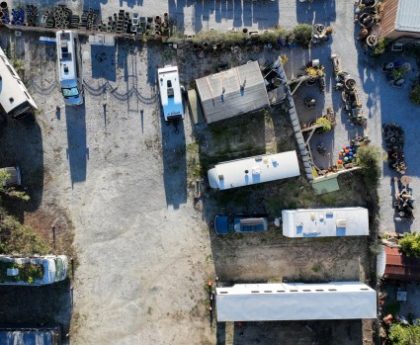The Santa Rosa office real estate market has remained relatively flat over the past 12 months, with 2023 fourth-quarter vacancy at 13.3%, compared to 13.6% a year before. Similarly, the Sonoma County vacancy remained unchanged at 16.1% during the same time period.
Unlike major metropolitan areas such as San Francisco, post-COVID sublease space has only had a minor effect on Sonoma County vacancy numbers. The reason subleases are problematic to office building investors is that they are typically heavily discounted in order for companies to “stop the bleeding” with a one-time write-off to get future real estate costs under control. These subleases compete directly with the entire market and directly impact potential rental rate growth.
Many of our clients find the relative health of the market surprising, based on what the media may want them to believe. In fact, sublease space currently makes up a minimal amount of available space being around 60 basis points of the vacancy countywide. or 156,000 square feet of the nearly 2.5 million-square-foot base. This amount is nearly identical to where it was at the end of 2019.
While vacancy percentages have remained flat, so have the rental rates that are being achieved on new transactions. The highest-quality (class A) office buildings are priced at $1.95–$2.35 per square foot on a full-service basis, while class B space is $1.65–$1.85. As in the past, free rent is often used to keep contract rates at a higher level while providing lower “effective” rents from a tenant’s perspective.
While it is a good thing for owners that rents are not tanking, the problem lies within the increases in operating expenses and the cost of tenant improvements. In the last 10-15 years, operating expenses for multi-tenant office buildings have increased around 60%, from 60–65 cents a square foot monthly to 95 cents–$1.05. Similarly, the cost of materials and labor to construct improvements and remodel have more than doubled.
These expense increases mixed with nearly flat office rents are squeezing the net incomes of office building investors naturally resulting in lower capitalization rate valuations based on those net incomes. It remains to be seen what impact these lower net income numbers will have when these owners are forced to refinance, as commercial mortgages typically have five- to 10-year terms.
It’s likely that many will no longer be able to meet minimum debt-coverage ratios due to their lower net incomes, and this issue will be compounded by the increase in interest rates and the cost of the debt. Many investors are likely to be forced to accept lower debt coverage by borrowing less, injecting additional equity into their investments or possibly even require them to sell their properties if they don’t have the means to do so.
Historically, lease and purchase demand in Sonoma County has coincided with interest rates where lower rates increase owner–user demand and higher interest rates lead those companies toward leasing their real estate. However, in this higher interest rate period, we are witnessing something slightly different from past cycles.
We are seeing companies continuing to evaluate and implement work structures that are providing more flexibility to their employees via hybrid work models. This is leading to lower lease transaction sizes given many choosing to reduce their office footprints. Overall, this is keeping leasing demand at a lower level than what we normally would have expected during a higher interest rate climate. This downsizing mentality coinciding with the previously mentioned lower owner/user demand has made the overall office market feel a bit quiet.
That being said, we have seen some sizable lease transactions close in the last few months including the Santa Rosa City School District taking 36,000 square feet at 110 Stony Point Road, county of Sonoma leasing 12,994 square feet at 141 Stony Circle, National Instruments relocating to 8,940 square feet at 120 Stony Point Road, Fostering Early Learning Institute taking 7,328 square feet at 2300 Northpoint Parkway and Nordby Construction relocating to 5,749 square feet at 600 Bicentennial Way.
Going forward, we anticipate the 2024 office market to be similar to the last 12 months. Tenants will likely continue to right size their footprints as their leases expire, but we don’t anticipate sublease opportunities to escalate. Furthermore, we believe rents and vacancies are likely to hold at or near current levels. Meanwhile, we have begun to see SBA and bank interest rates come down which should lead to more interest in owner/user purchases.
Over the long term, the Sonoma County office market needs to see some growth in full service rental rates given the previously mentioned increases in expenses and the cost of tenant improvements. A small uptick in demand and the dwindling supply of the best quality spaces could be the catalyst that leads the market to a 10%–20% bump in rental rates. This level of increase is needed by the class A multi-tenant office building investors to be able to absorb the increased operating costs and to stabilize the values of their properties.
Dave Peterson is a senior partner and executive vice president of Keegan & Coppin Co. Inc. (keegancoppin.com) in Santa Rosa.
This post was originally published on 3rd party site mentioned in the title of this site






